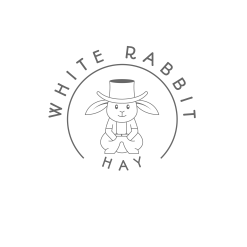Timothy Hay for Horses:
Timothy hay is an excellent source of fibre and roughage to include in your horse’s diet.
Scot’s Timothy hay is probably the most digestible of all hays and is one of the most popular hay feeds for horses. The hay is a late-maturing high fibre forage with a lower protein content.
Horses and ponies will eat between 2 & 3% of their body weight every day. High performance equines and breeding stock will need more, timothy hay may make up 70 to 90% of their diet depending on how much hard feeding is fed.
What does it do for Horses?
Horse owners have found that Timothy hay helps with skin and coat condition, better digestion, bowel health, and weight maintenance. It is also very helpful for colic prone, protein-sensitive, and obese horses.
Stabled Horses – Health and comfort:
Chewing Timothy hay is very good for stabled horses because it most closely mimics the normal day long grazing activity for pasture animals. Timothy can help satisfy your horse’s natural need to forage and graze when they stabled. Alfalfa hay can meet energy requirements of horses, especially high-performance equines, but the low nutritional concentrations of Timothy hay are ideal for all equine workloads.
Timothy Hay for Racehorses:
For thoroughbreds, fibre is a great start for any feeding program. Fibre from Timothy will be fermented in the gut and used as an energy source throughout the day. It also promotes good digestion and prevents conditions like gastric ulcers and colic. Most racehorses require more energy than Timothy hay provides, so usually their diet is supplemented with a percentage of Alfalfa mix.
Hay Quality:
While Timothy hay quality is influenced by many factors, including geography, plant variety, weather conditions during growth and harvest and day length, it is the stage of plant maturity that really dictates the nutritional quality of the hay. First or second cutting doesn’t truly provide much information about plant maturity or overall quality.
Timothy hay is worth more to the horse owner when it is harvested at an immature stage of growth. It will have higher levels of crude protein and lower amounts of both NDF and ADF. The nutritional quality of Timothy hay is not related to a particular cutting, but rather to the stage of maturity of the plant when it was cut. Absence of seed heads indicate that Timothy hay is immature, but analysis by a laboratory is the only way to know the actual nutritional quality of the hay.
